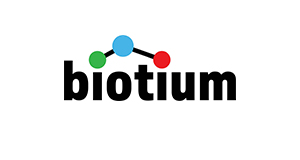Galectin-1 / Human Placental Lactogen (hPL) (GAL1/2499R), CF740 conjugate, 0.1mg/mL
Galectin-1 / Human Placental Lactogen (hPL) (GAL1/2499R), CF740 conjugate, 0.1mg/mL
Artikelnummer
BTMBNC742499-500
Verpackungseinheit
500 uL
Hersteller
Biotium
Verfügbarkeit:
wird geladen...
Preis wird geladen...
Description: Galectin-1 is a member of the beta-galactoside-binding family and is a dimeric protein of 14 kD participating in a variety of normal and pathological processes, including cancer progression. Galectin-1 can affect the proliferation of normal and malignant cells. Inhibition of cell growth is observed in a lactose-dependent manner as lower concentrations of the lectin stimulate cell proliferation. Galectin-1 may also be implicated in the induction of apoptosis of activated T cells through the binding of exogenous galectin-1 to CD45 molecules present on the surface of lymphocytes. Galectin-1, reported to be present either at the surface of cancer cells or accumulated around these cells could act as an immunological shield to protect against a T cell immune response and provide an advantage for survival.Primary antibodies are available purified, or with a selection of fluorescent CF® Dyes and other labels. CF® Dyes offer exceptional brightness and photostability. Note: Conjugates of blue fluorescent dyes like CF®405S and CF®405M are not recommended for detecting low abundance targets, because blue dyes have lower fluorescence and can give higher non-specific background than other dye colors.
Product origin: Animal - Oryctolagus cuniculus (domestic rabbit), Bos taurus (bovine)
Conjugate: CF740
Concentration: 0.1 mg/mL
Storage buffer: PBS, 0.1% rBSA, 0.05% azide
Clone: GAL1/2499R
Immunogen: Recombinant human Galectin-1 protein fragment (aa12-108) (exact sequence is proprietary)
Antibody Reactivity: Galectin-1/Human Placental Lactogen
Entrez Gene ID: 3956
Z-Antibody Applications: IHC, FFPE (verified)/WB (verified)
Verified AB Applications: IHC (FFPE) (verified)/WB (verified)
Antibody Application Notes: Higher concentration may be required for direct detection using primary antibody conjugates than for indirect detection with secondary antibody/ELISA: 2-4 ug/m for coating order Ab without BSA/Immunohistology (formalin): 0.5-1 ug/mL for 30 minutes at RT/Staining of formalin-fixed tissues requires boiling tissue sections in 10 mM citrate buffer, pH 6.0, for 10-20 minutes followed by cooling at RT for 20 minutes/Optimal dilution for a specific application should be determined by user
Product origin: Animal - Oryctolagus cuniculus (domestic rabbit), Bos taurus (bovine)
Conjugate: CF740
Concentration: 0.1 mg/mL
Storage buffer: PBS, 0.1% rBSA, 0.05% azide
Clone: GAL1/2499R
Immunogen: Recombinant human Galectin-1 protein fragment (aa12-108) (exact sequence is proprietary)
Antibody Reactivity: Galectin-1/Human Placental Lactogen
Entrez Gene ID: 3956
Z-Antibody Applications: IHC, FFPE (verified)/WB (verified)
Verified AB Applications: IHC (FFPE) (verified)/WB (verified)
Antibody Application Notes: Higher concentration may be required for direct detection using primary antibody conjugates than for indirect detection with secondary antibody/ELISA: 2-4 ug/m for coating order Ab without BSA/Immunohistology (formalin): 0.5-1 ug/mL for 30 minutes at RT/Staining of formalin-fixed tissues requires boiling tissue sections in 10 mM citrate buffer, pH 6.0, for 10-20 minutes followed by cooling at RT for 20 minutes/Optimal dilution for a specific application should be determined by user
| Artikelnummer | BTMBNC742499-500 |
|---|---|
| Hersteller | Biotium |
| Hersteller Artikelnummer | BNC742499-500 |
| Verpackungseinheit | 500 uL |
| Mengeneinheit | STK |
| Reaktivität | Human |
| Klonalität | Recombinant |
| Methode | Western Blotting, Immunohistochemistry |
| Isotyp | IgG |
| Wirt | Rabbit |
| Konjugat | Conjugated, CF740 |
| Produktinformation (PDF) | Download |
| MSDS (PDF) | Download |

 English
English







